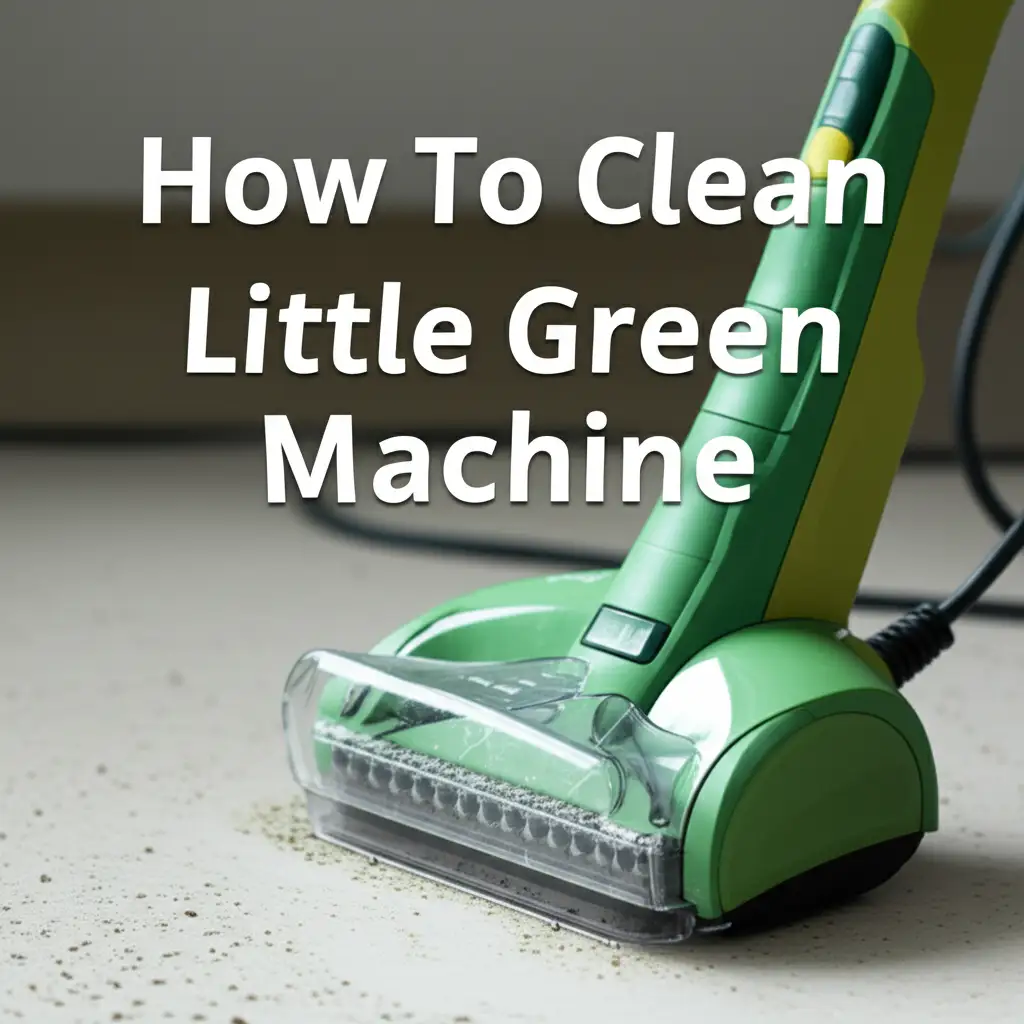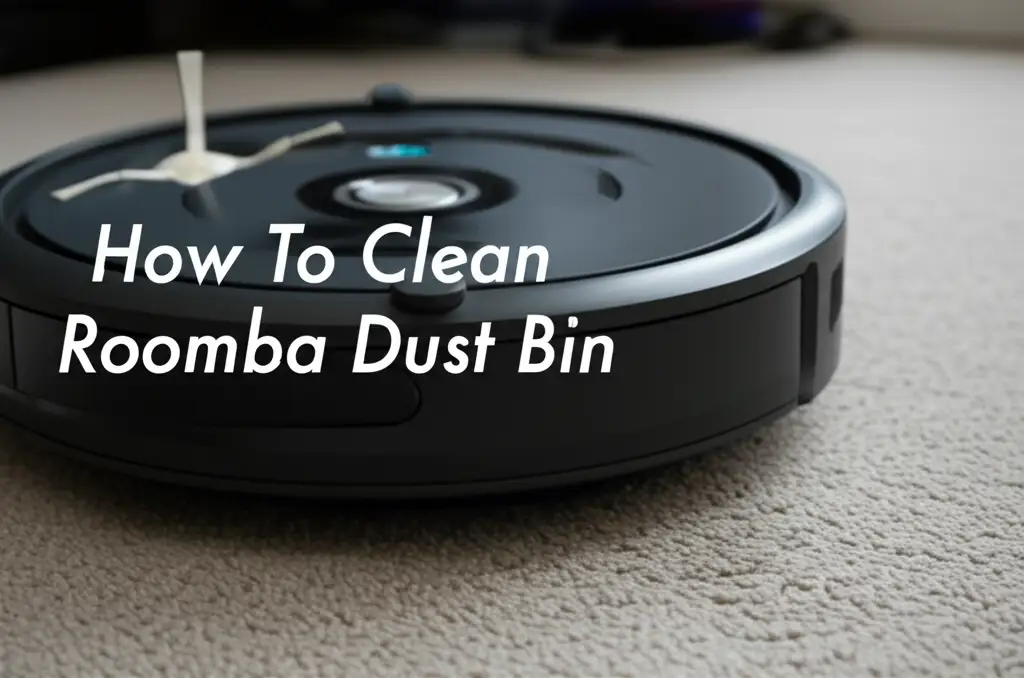· Appliance Maintenance · 17 min read
How To Clean Skull Shaver

How To Clean Your Skull Shaver for Optimal Performance
Do you use a Skull Shaver for your daily grooming? Keeping it clean is vital for both your skin and the device itself. A dirty shaver can cause skin irritation or reduce shaving effectiveness. I know how important a smooth, comfortable shave is. Cleaning your Skull Shaver regularly extends its life and keeps it performing at its best.
This article will guide you through the complete process of cleaning your Skull Shaver.
We will cover daily rinses, deep cleaning procedures, and essential maintenance tips. You will learn about the right tools and products to use for lasting hygiene. Follow these steps to ensure your Skull Shaver remains in top condition, delivering a perfect shave every time.
Takeaway
- Daily Rinse: Rinse shaver heads under running water after each use.
- Weekly Deep Clean: Disassemble, wash parts with soap and water, and dry completely.
- Lubrication: Oil shaver blades periodically to maintain performance.
- Hygiene First: Prevent skin issues and extend shaver lifespan through regular cleaning.
To clean your Skull Shaver, rinse the shaver heads under warm water after each use to remove hair. For a deep clean, detach the blades, wash them with liquid soap, and use a brush for stubborn debris. Allow all parts to dry completely before reassembling the shaver for optimal hygiene and performance.
Why Cleaning Your Skull Shaver Matters
Cleaning your Skull Shaver is more than just good practice; it is essential for several reasons. Firstly, proper cleaning ensures hygiene. Hair, skin cells, and product residue build up inside the shaver heads. This creates a breeding ground for bacteria. These bacteria can cause skin irritation, redness, or even infections on your scalp. Nobody wants that experience after a fresh shave.
Secondly, regular cleaning keeps your shaver performing at its peak. Accumulated debris can dull the blades. It can also slow down the motor. A dirty shaver pulls hair instead of cutting it cleanly. This leads to an uncomfortable shaving experience. It also means you spend more time trying to get a smooth finish.
Thirdly, consistent cleaning extends the life of your device. When parts are clean, they move freely. This reduces wear and tear on the motor and blades. Replacing shaver heads or even the entire unit costs money. By investing a few minutes in cleaning, you save money in the long run. I always make time for this simple task to protect my investment.
Finally, a clean shaver provides a consistently smooth and close shave. The blades glide easily over your skin when they are free of obstruction. This leads to a more efficient and satisfying grooming routine. You get the best results every time you shave.
Essential Tools and Supplies for Skull Shaver Cleaning
To properly clean your Skull Shaver, you do not need many special items. Most of the tools are already in your home. Having the right supplies ready makes the cleaning process simple and quick. This preparation also ensures you clean effectively without damaging your device.
First, you will need warm running water. This is the primary tool for rinsing away loose hair and debris. Many Skull Shaver models are water-resistant, making this step easy. Always check your specific model’s instructions for water compatibility. Second, prepare some liquid hand soap or mild dish soap. This helps to break down oils and stubborn residue. A small drop is usually enough for a thorough wash.
Next, have a small cleaning brush handy. Most Skull Shavers come with a tiny brush specifically for this purpose. If you do not have one, a soft toothbrush works well. This brush helps dislodge tiny hair particles stuck deep within the blades. It reaches spots that water alone cannot clean.
You will also need a soft towel or microfiber cloth. This is for drying the shaver parts after washing. Proper drying prevents water spots and rust formation. Air drying is also an option, but a cloth helps speed up the process. For more general cleaning of surfaces, a microfiber cloth works wonders for cleaning stainless steel components that might be part of your shaver stand or charging base.
Finally, consider having clipper oil or shaver lubricant. This is not for every cleaning session, but it is vital for long-term maintenance. A few drops of oil keep the blades moving smoothly. This prevents friction and extends blade sharpness. These simple tools ensure your Skull Shaver stays clean and performs optimally.
Step-by-Step Daily Skull Shaver Cleaning Routine
Establishing a daily cleaning routine for your Skull Shaver is crucial. This simple habit prevents significant buildup of hair and debris. It takes only a few moments after each shave. I find that doing it immediately makes it less of a chore.
First, turn off your shaver. Safety comes first. Make sure the device is completely powered down before you begin any cleaning. Disconnect it from any charging cables. Next, remove the shaver head unit from the main body. Most Skull Shaver models allow for easy detachment of the entire head. This provides better access to the blades.
Now, rinse the shaver heads under warm running water. Hold the head under the faucet. Let the water flow through the individual rotary blades. This washes away most of the loose hair and foam. You can gently shake the head to help dislodge particles. Many models are designed for this wet rinse, similar to how one might clean plastic surfaces with water. If you want to know how to clean plastic shower surfaces, the principle of using water to rinse away debris is very similar here.
After rinsing, tap the shaver head gently on a hard surface. This helps shake out any remaining water or tiny hair strands. Do this over a sink to contain the debris. Be careful not to tap too hard, as you could damage the delicate blades.
Finally, let the shaver head air dry completely. Place it on a clean towel. Ensure good air circulation. Do not reattach the head to the shaver body until it is fully dry. This prevents moisture from getting into the motor. It also helps prevent bacterial growth. A quick daily rinse keeps your shaver fresh for tomorrow’s shave.
In-Depth Weekly Skull Shaver Deep Cleaning
While daily rinsing is good, a weekly deep clean removes hidden grime. This process ensures thorough sanitation and shaver longevity. I make sure to set aside a few extra minutes for this deeper clean every week. It is a vital step for optimal performance.
Start by disassembling the shaver heads completely. Your Skull Shaver manual will show you how to do this. Typically, you twist or unclip the outer ring, then remove each individual rotary blade. Some models have a common retainer for all blades. Place all small parts in a safe spot, like a small bowl. This prevents them from rolling away.
Next, wash the individual blades and the head casing with warm water and liquid soap. Apply a small amount of mild hand soap or dish soap to your hands. Rub it gently onto each blade. Use the small cleaning brush that came with your shaver. This brush helps scrub away stubborn hair, skin oils, and product residue. Pay close attention to the small grooves and edges of each blade. For comparison, when thinking about how to clean stubborn grime from areas that accumulate debris like the bottom of a shower, the method involves similar scrubbing and rinsing.
After scrubbing, rinse all parts thoroughly under running water. Make sure no soap residue remains. Soap buildup can make the blades sticky. It can also cause skin irritation. Ensure the water runs clear through all components.
Finally, allow all parts to dry completely before reassembly. Shake off excess water from each part. Lay them out on a clean, dry towel. You can also use a hairdryer on a cool setting from a distance to speed up drying. Ensure every component is bone dry. Moisture can lead to rust or motor damage. Once dry, carefully reassemble the shaver heads following your shaver’s instructions.
Lubrication and Long-Term Shaver Maintenance
Cleaning is important, but lubrication takes your Skull Shaver maintenance to the next level. Blades need oil to move smoothly. This simple step reduces friction and prolongs the life of your shaver. I always make sure to oil my shaver regularly to keep it running like new.
Lubricate your shaver blades every few weeks or after every deep clean. Use specialized clipper oil or shaver lubricant. Do not use household oils like cooking oil. These can gum up the blades and attract debris. Place one small drop of oil on each rotary blade. Some shavers may require oiling in specific spots as per their manual.
After applying the oil, turn on the shaver for about 10-20 seconds. This allows the oil to spread evenly across the blades. You will often hear the shaver sound smoother immediately. The oil creates a protective barrier. This barrier reduces wear and tear. It also helps the blades cut hair more efficiently.
Beyond cleaning and oiling, store your Skull Shaver properly. Keep it in a dry place. Avoid humid environments like steamy bathrooms. Moisture can damage the internal components and lead to rust. Many shavers come with a protective travel case. Use it when not in use. This protects the blades from dust and impacts.
Also, monitor your shaver heads for wear. Over time, even with good cleaning, blades become dull. Most Skull Shaver manufacturers recommend replacing the shaver heads every 4 to 6 months. This varies depending on usage frequency. Dull blades pull hair and irritate the skin. Replacing them ensures a consistently comfortable shave. Check your shaver’s manual for specific replacement guidelines. Proper care makes a big difference in your shaving experience.
Troubleshooting Common Skull Shaver Cleaning Issues
Even with regular cleaning, you might encounter some common issues. Knowing how to troubleshoot these problems saves you frustration and keeps your shaver working well. I have faced some of these myself, and finding solutions made a huge difference.
One common issue is blades feeling sticky or pulling hair. This usually means there is still hair or product residue stuck in the shaver heads. Even after a rinse, tiny particles can remain. Try another deep clean. Disassemble the heads and use the cleaning brush vigorously. Ensure you get into every small crevice. After cleaning, apply a fresh drop of oil to each blade. This often restores smooth operation.
Another problem can be unpleasant odors coming from the shaver. This is a strong indicator of bacterial growth or mold. Hair and moisture combine to create this environment. A simple rinse will not fix it. You need a thorough deep clean. After washing with soap and water, you can try a very light spray of rubbing alcohol on the blades. Let it air dry completely. Alcohol disinfects and helps dry moisture. While this article focuses on cleaning specific items, learning how to clean mold in shower addresses similar issues of preventing microbial growth in damp environments, which applies conceptually to a shaver.
Sometimes, the shaver might not turn on or charge properly after cleaning. First, ensure all parts are completely dry before reassembly. Moisture inside the shaver can cause short circuits. If you suspect water damage, let the shaver air dry for 24-48 hours. Remove the head unit and open any battery compartments if safe to do so. Secondly, check the charging port for any debris. A small brush can remove lint. Ensure the charging cable is fully inserted.
Finally, if your shaver still pulls hair after thorough cleaning and oiling, it might be time for blade replacement. Blades naturally dull over time. No amount of cleaning can restore a worn-out blade. Check your shaver’s manual for the recommended replacement schedule. Replacing the heads is often easier and cheaper than buying a new shaver.
Maintaining Optimal Shaver Hygiene and Longevity
Beyond regular cleaning, adopting a few simple habits ensures your Skull Shaver stays hygienic and lasts for years. These practices protect your investment and your skin. I find that prevention is always better than trying to fix a problem later.
First, shave on clean skin. Before using your shaver, wash your face or scalp. Remove any dirt, oils, or old product. This reduces the amount of debris entering the shaver heads. Clean skin means fewer impurities for the shaver to encounter. This keeps your blades cleaner for longer periods.
Second, store your shaver in a dry environment. As mentioned earlier, humidity is a shaver’s enemy. After use, do not leave your shaver inside a steamy shower or directly on a wet countertop. Find a cabinet or shelf where it can remain dry. Some people use their shaver’s charging stand, which often helps with air circulation. A dry environment prevents rust and inhibits bacterial growth.
Third, avoid dropping your shaver. Impacts can misalign the delicate blades or damage the internal motor. A damaged shaver might not clean properly or shave effectively. Always handle your shaver with care. Use its protective cap or case when traveling.
Fourth, use only manufacturer-recommended parts and accessories. When it is time to replace your shaver heads, buy genuine Skull Shaver replacements. Off-brand parts might not fit correctly. They may also perform poorly. Using the right parts ensures your shaver continues to function as designed. This extends its overall lifespan.
Finally, consider a shaver cleaning solution. Some brands offer specialized cleaning solutions or sprays. These can provide an extra layer of disinfection. They are often used in conjunction with water rinsing. Read the product instructions carefully before use. These extra steps contribute significantly to the long-term health of your shaver and your skin.
When to Replace Your Skull Shaver Blades
Knowing when to replace your Skull Shaver blades is just as important as cleaning them. Even the best cleaning routine cannot bring back the sharpness of worn blades. Dull blades cause irritation, pulling, and an inefficient shave. I learned the hard way that ignoring this step makes shaving a chore.
The most common indicator for replacement is decreased performance. If your shaver starts pulling hair instead of smoothly cutting it, the blades are likely dull. You might notice you need to go over the same area multiple times. This happens even after a thorough cleaning and lubrication. A fresh blade glides easily and cuts hair on the first pass.
Another sign is skin irritation after shaving. If you experience redness, bumps, or discomfort, dull blades might be the cause. Worn blades create more friction. They can also create microscopic tears in your skin. New, sharp blades provide a smoother, less irritating shave. Pay attention to how your skin feels post-shave.
Most Skull Shaver manufacturers recommend replacing shaver heads every 4 to 6 months. This timeframe can vary based on your shaving frequency and hair type. If you shave daily and have coarse hair, you might need to replace them closer to the 4-month mark. Lighter users might get closer to 6 months. Check your specific model’s manual for its recommended replacement interval.
Visible wear on the blades is another clear sign. While difficult to see with the naked eye, sometimes you might notice small nicks or irregularities on the foils or cutters. If you look closely, you might see signs of corrosion or significant wear, especially if cleaning has been neglected.
Replacing blades is a simple process. Skull Shaver designs allow for easy head removal and replacement. Investing in new blades every few months ensures you maintain a comfortable, efficient, and hygienic shave. Do not wait until your shaver becomes painful to use.
The Role of Water Quality in Shaver Cleaning
The quality of the water you use for cleaning your Skull Shaver can play a subtle but important role. Most people use tap water, and for daily rinsing, this is perfectly fine. However, understanding how water affects cleaning and shaver longevity is helpful. I sometimes consider this factor, especially when dealing with hard water.
Hard water contains high levels of minerals, such as calcium and magnesium. When this water evaporates, it leaves behind mineral deposits. These deposits can build up on your shaver blades and inside the head unit. Over time, this mineral scale can reduce blade effectiveness. It makes the blades feel rough. It can also impede the smooth operation of the rotary cutters. You might notice white residue on parts if your water is very hard.
If you have hard water, consider a few adjustments. After rinsing your shaver under tap water, give it a quick rinse with distilled water. Distilled water is free of minerals. This final rinse helps wash away tap water and prevents mineral deposits from forming. This step is particularly useful after deep cleaning when the parts are fully exposed.
Another option is to ensure very thorough drying. If mineral deposits do form, they are more likely to harden if left wet. Shake off as much water as possible. Use a clean towel to blot dry any accessible surfaces. Then allow all parts to air dry completely in a well-ventilated area. This minimizes the time minerals have to settle.
While it is not strictly necessary for everyone, being aware of your water quality can help. If you live in an area with extremely hard water, adding a distilled water rinse to your deep cleaning routine can benefit your shaver’s longevity. It helps maintain the sharpness and smooth glide of the blades. It also reduces the need for more frequent deep cleans to remove stubborn scale.
FAQ Section
How often should I clean my Skull Shaver?
You should rinse your Skull Shaver heads under warm water after every single use to remove loose hair. Perform a deeper, more thorough cleaning once a week. This involves disassembling the heads, washing them with soap and water, and ensuring they dry completely. This routine prevents hair buildup and maintains hygiene.
Can I use rubbing alcohol to clean my Skull Shaver blades?
Yes, you can use rubbing alcohol to sanitize your Skull Shaver blades. After washing with soap and water, a light spray or wipe with rubbing alcohol helps disinfect the blades and promotes faster drying. Ensure the alcohol evaporates completely before reassembling the shaver. Do not immerse the entire shaver in alcohol.
What kind of soap should I use for cleaning?
Use a mild liquid hand soap or a gentle dish soap for cleaning your Skull Shaver. These soaps are effective at breaking down oils, hair, and product residue without being too harsh on the shaver components. Avoid abrasive cleaners or strong chemical solutions, as these can damage the blades or plastic parts.
Why does my shaver still pull hair after cleaning?
If your shaver pulls hair even after a thorough cleaning, the blades are likely dull. Blades naturally wear down over time, losing their sharpness. Most manufacturers recommend replacing Skull Shaver heads every 4 to 6 months, depending on usage. Check your shaver’s manual for specific replacement guidelines.
How do I lubricate my Skull Shaver blades?
Apply one small drop of specialized clipper oil or shaver lubricant to each rotary blade after cleaning and drying. Turn the shaver on for 10-20 seconds to allow the oil to spread evenly. This reduces friction, maintains blade sharpness, and ensures smooth operation. Do this every few weeks or after each deep clean.
Can I put my Skull Shaver in a dishwasher?
No, you should never put your Skull Shaver or its components in a dishwasher. Dishwashers use high heat and harsh detergents that can severely damage the delicate blades, internal electronics, and plastic housing of your shaver. Always follow the manufacturer’s specific cleaning instructions, which usually involve hand washing with mild soap.
Conclusion
Keeping your Skull Shaver clean is a simple but powerful habit. It ensures a comfortable shave, maintains hygiene, and extends the life of your device. By following a consistent routine of daily rinsing and weekly deep cleaning, you prevent common issues like skin irritation and dull blades. Remember to use mild soap, a small brush, and warm water for effective cleaning.
Lubricating the blades regularly is also key for peak performance. Store your shaver in a dry place to prevent moisture damage. Replacing worn blades when needed ensures your Skull Shaver always delivers a smooth, efficient shave. Make shaver care a regular part of your grooming routine. Your skin and your shaver will thank you for it.
- skull shaver cleaning
- electric shaver maintenance
- shaver hygiene
- blade care
- grooming tips




